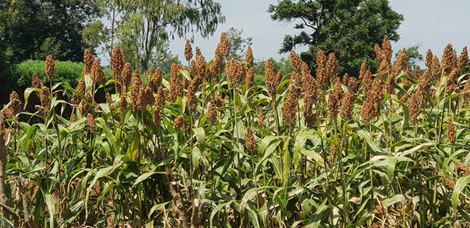The Kenya Plant Health Inspectorate Service (KEPHIS) has launched drought resistant and fast maturing crops in Rarieda, Siaya County to benefit smallholder farmers.
The crops which were on display at Rarieda Farmers Field day in July included finger millet, sorghum, groundnuts, cassava, soya beans, nerica rice, cotton and orange fleshed sweet potatoes.
Nerica rice for instance has requires less water and matures faster in 105 days than other varieties such as Mwea rice that need to be flooded with water during cultivation.
Orange fleshed sweet potatoes varieties that are being promoted by KEPHIS are rich in vitamin A, an essential component in the body that supports immunity, boosts vision and keeps bones healthy.
Related
KEPHIS introduces 52 new disease resistant potato varieties
KEPHIS unveils 140 new disease resistant seed varieties
KEPHIS and county governments bring export eduction to farmers\’ doorsteps
KEPHIS produces the vines at the Plant Quarantine and Biosecurity Station at Muguga for onward multiplication by farmers.
Cassava on dislay at Rarieda field day. Photo: Kephis.org
Currently, the government, through KEPHIS is undertaking National Performance Trials (NPTs) for BT cotton at Kisumu. Once the trials are done and successful, the cotton can be multiplied and availed to farmers. The cotton varieties are hybrid which means higher yields and less incidences of the bollworm which is a menace to cotton farming.
This comes at a time when the Kenyan ministry of agriculture has urged farmers all over the country to plant millet, cassava, sorghum and amaranth crops to be used for blending maize flour in a move aimed at reducing overdependence on maize for food and income and improve the country’s nutritional needs.

Finger millet on display. Kephis.org
According to a report released last year by the United Nations Children’s Fund (UNICEF), 73,000 children in the country are malnourished and are at risk of death due to hunger and poor feeding habits.
Up to four million farmers are targeted in the program aimed at promoting cultivation of indigenous crops, with 14m bags targeted for production by 2022.
Maize consumption is estimated at 98 kilograms per person per year, which translates to roughly 30 to 34 million bags (2.7 to 3.1m metric tonnes) per year, according to Tegemeo Institute of Agricultural Policy And Development 2016 research.
The ministry estimates that the blending of millet , cassava, amaranth and cassava with maize flour will reduce maize consumption from about 30m bags per year to about 20m bags over the same period while the surplus will be exported.
The program will be rolled out by the government in partnership with local flour millers and the farmers who will have access ready market for their produce.
The cost of the blended flour will be determined by market forces and the pilot project has already kicked off.
The government in future also targets to produce wheat and sweet potatoes blends.
This comes at a time when maize production decreased by 6.3 per cent from 37.8m bags in 2016 to 35.4m bags in 2017 according to the Economic Survey 2018.
1.6m bags of sorghum were produced in 2017 up from 1.3m bags in 2016, an increase of 23 per cent while 3.79m metric tonnes of cassava were produced during the same period.